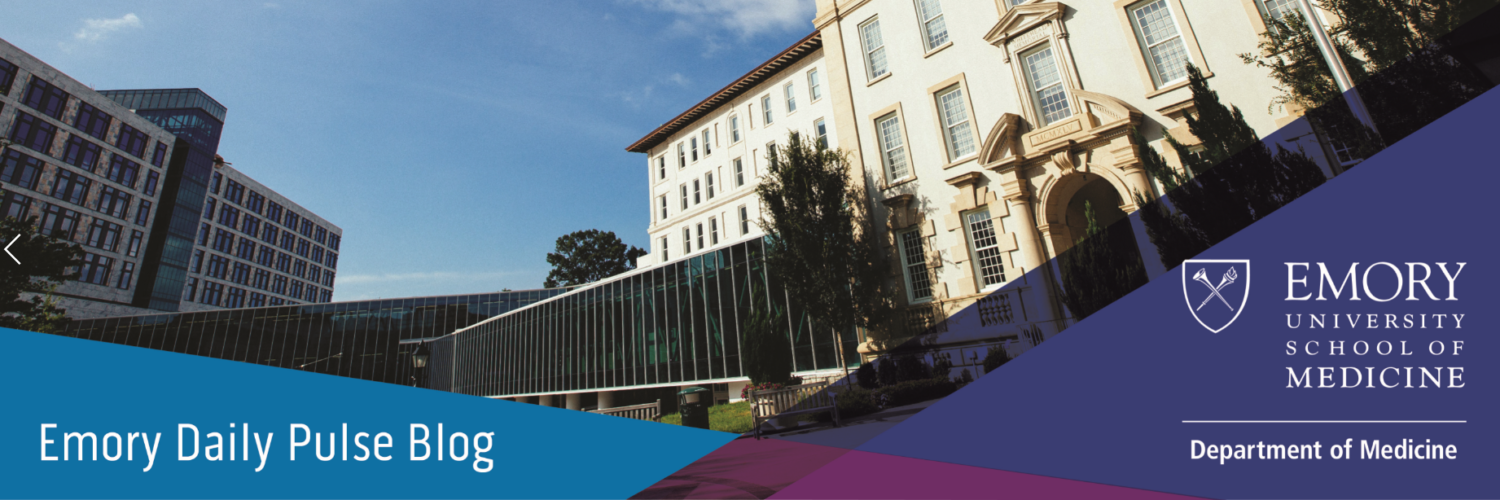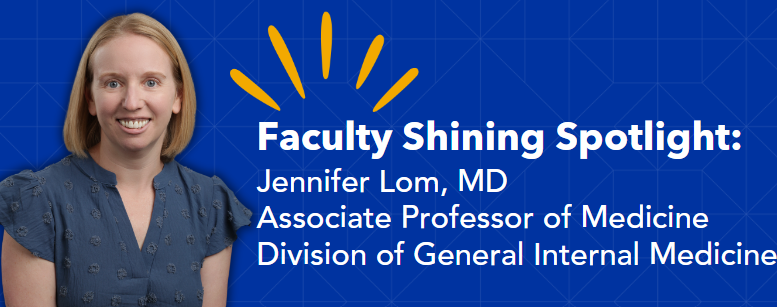We are shining our first spotlight on Jennifer Lom, MD, Associate Professor of Medicine, within the Division of General Internal Medicine at Grady Health System. Dr. Lom developed and implemented a novel Alcohol Use Disorder (AUD) Clinic at Grady, and recently received the Emory at Grady Innovation Award for her work. Today we explore the inspiration and support systems that helped make this achievement a reality, the challenges and successes she encountered along the way, and how she is hoping this work can inform the larger academic community!
Why did it feel important to develop and establish this clinic? Are there particular experiences that led you to create this care pathway for the Grady population?
I have to make sure that I give credit to Erica Heiman (previously a GIM faculty member who is now up at Yale) who really had the initial vision for this clinic. In 2022, I took over as the medical director to help address the high prevalence of alcohol use disorder in the Grady population which we know leads to high healthcare costs from frequent ER visits and admissions. When you look at the Atlanta area, 40% of admissions to public inpatient substance use treatment facilities in Atlanta cited alcohol as the main substance of abuse. Despite the high prevalence, when the clinic first started, it was noted that very few patients were receiving medical therapy for AUD and very few clinicians felt comfortable prescribing medication. The only available option for our patients was psychotherapy. We know that medications in addition to behavioral health interventions help reduce heavy alcohol use, decrease heavy drinking days, and help improve abstinence so we wanted a place where clinicians were able to refer their patients and we could make a difference.
Who or what helped you move this project forward?
Dr. Lesley Miller, the medical director of the Grady Liver Clinic (GLC), has been an amazing mentor. She helped bring the AUD clinic under the infrastructure of the GLC allowing us to utilize their patient navigator, clinic manager, and nurse practitioner amongst other resources. She has been critical in helping us think about expanding referrals, streamlining our services, and delving into research and publishing patient outcomes.
Dr. Shelly-Ann Fluker, the co-medical director of the GLC. She brought me into her liver clinic research group and has been the catalyst for me starting to look at the clinic outcomes and getting our clinic data presented at various national meetings.
Dr. Jada Bussey-Jones, the chief of Grady General Internal Medicine, for being supportive when I took over the role of medical director. She allowed some of my clinical time to be focused on the AUD clinic and seeing patients, and she is always supportive of our career endeavors. Since this was a relatively new space for me and I wasn’t trained in addiction medicine, Jada was very supportive of my attending various faculty development opportunities to improve my own knowledge.
While developing this clinic, what were the biggest challenges that you faced? How did you address these challenges to continue to move forward?
When I took over the clinic, addiction medicine, and alcohol use disorder were not areas where I had a strong knowledge base. I was really interested in the interplay between AUD and liver disease given my involvement in the GLC and saw how beneficial the treatment was for our patients, but it was a large learning curve. I sought out faculty development opportunities within the addiction medicine space to increase my knowledge and comfort level (now that everyone was coming to me as the “expert”).
Another challenge was logistical- being new in the space and trying to determine what was being offered by other services at Grady (psychiatry/toxicology/TOC clinic). I wanted to make sure we weren’t duplicating efforts. A lot of this is just getting facetime with the other departments (talking with the medical directors, presenting at the division meetings), making sure they are aware of our services, and letting me know about what they have to offer our patients. These services also helped me understand what community resources were available for our patients.
Tell us about a moment when you could see this coming together or felt that you were on your way to achieving your goals for this project.
The first moment was when I presented our initial clinic data during our division lunch as a work in progress. I was amazed at how excited our faculty were when I presented the outcomes of the clinic. This put the clinic on the map and led to us being nominated for an Emory at Grady award which led to more interest in the clinic and from there it just snowballed.
Another moment was when I was seeing follow-up patients in the clinic one Tuesday this past December. On that day, three consecutive patients, who had previously had multiple hospitalizations and ICU admissions related to alcohol use and withdrawal, had realized they had been successful in achieving their goals of cutting back or abstaining from alcohol, and had successfully stayed out of the hospital for over a year! They had renewed relationships with family, their bloodwork had improved dramatically, and health-wise, they overall felt much better. It was remarkable to see such a great reminder of the importance of the clinic.
What has it been like to take on this project while you are already carrying a full clinical load and balancing your own personal priorities? How did you find a balance to keep this on your priority list?
Over the years, I have learned that I needed to start prioritizing projects that I feel passionate about. That means saying yes to those opportunities and no to the ones that do not bring me joy. Addiction medicine was one of those areas that I wanted to learn more about, I wanted to help those patients and improve their quality of life. When I feel passionate about a project, it definitely feels less like work and more like something that I enjoy doing. That being said, I do have a full clinical workload and two young children at home, so sometimes it does feel hard to balance. Luckily, I have great mentors who also have families and value work-life balance. I’ve learned to be intentional about how I utilize my time, how to make meetings more effective, and how to utilize students and trainees to help with scholarship so it does not all fall on me.
What scholarship has come from this already, is in process, or do you foresee coming from this work? Are there ideas that you have that you need help developing?
We’ve collected data on the first year of the clinic and presented that at the AASLD Liver Meeting last year. We will also be presenting a poster at the Society of General Internal Medicine’s annual meeting on our clinic model in May. We are currently collecting data from the clinic’s second year, and we hope to be able to use the combined data sets to generate publications describing our clinic model and looking at patient outcomes. Aside from scholarship, I would love to think about how to get interested students or residents to rotate in the clinic and think about curricular development as well.


Be the first to comment on "DOM Faculty Shining Spotlight: Jennifer Lom, MD"